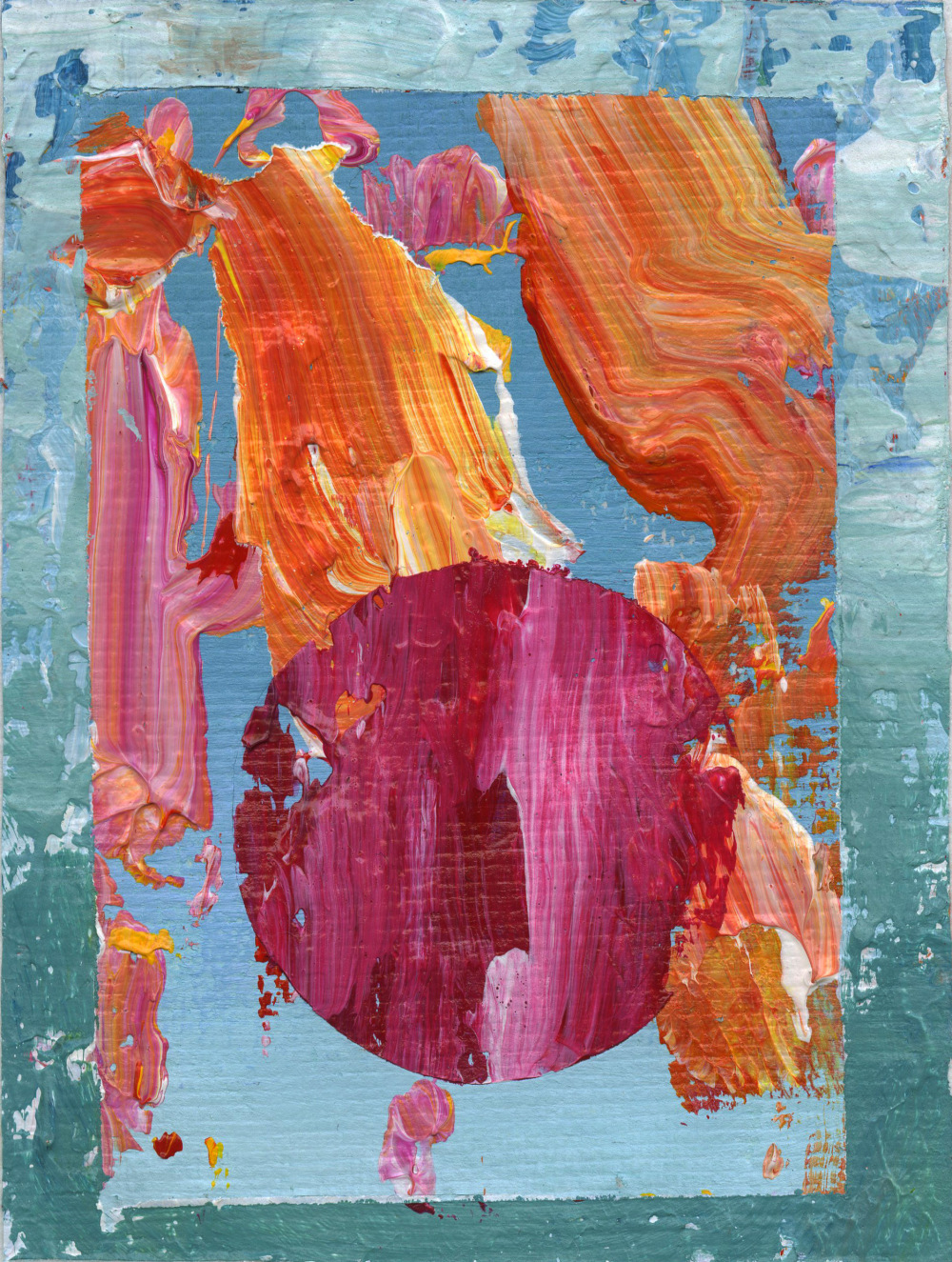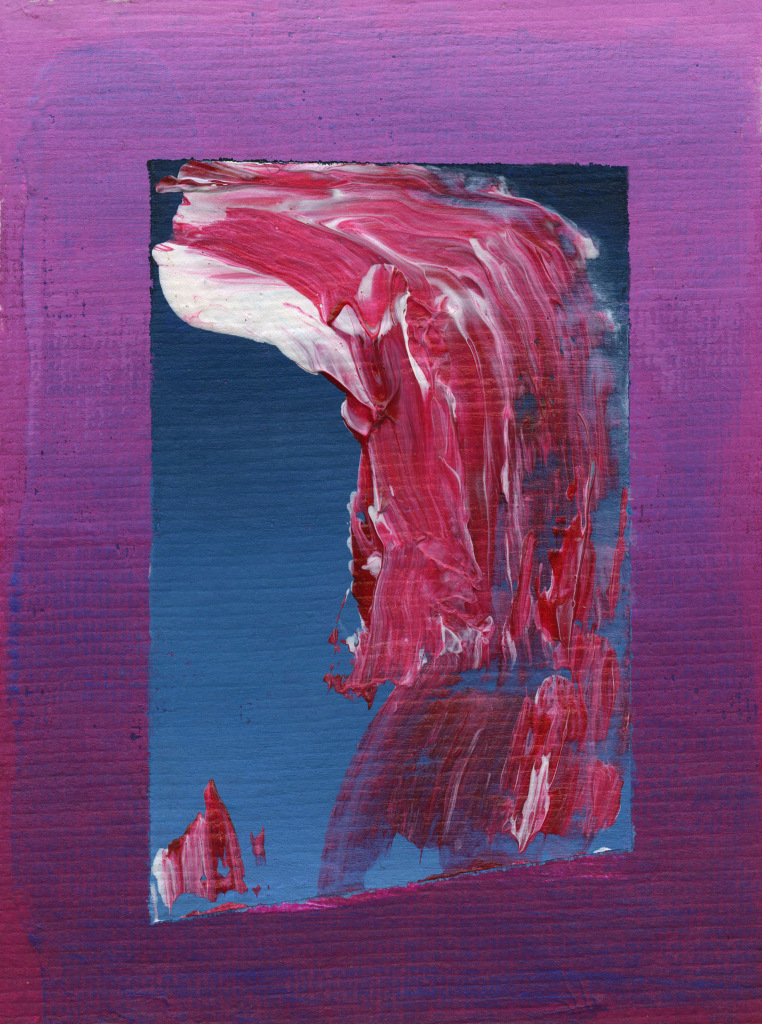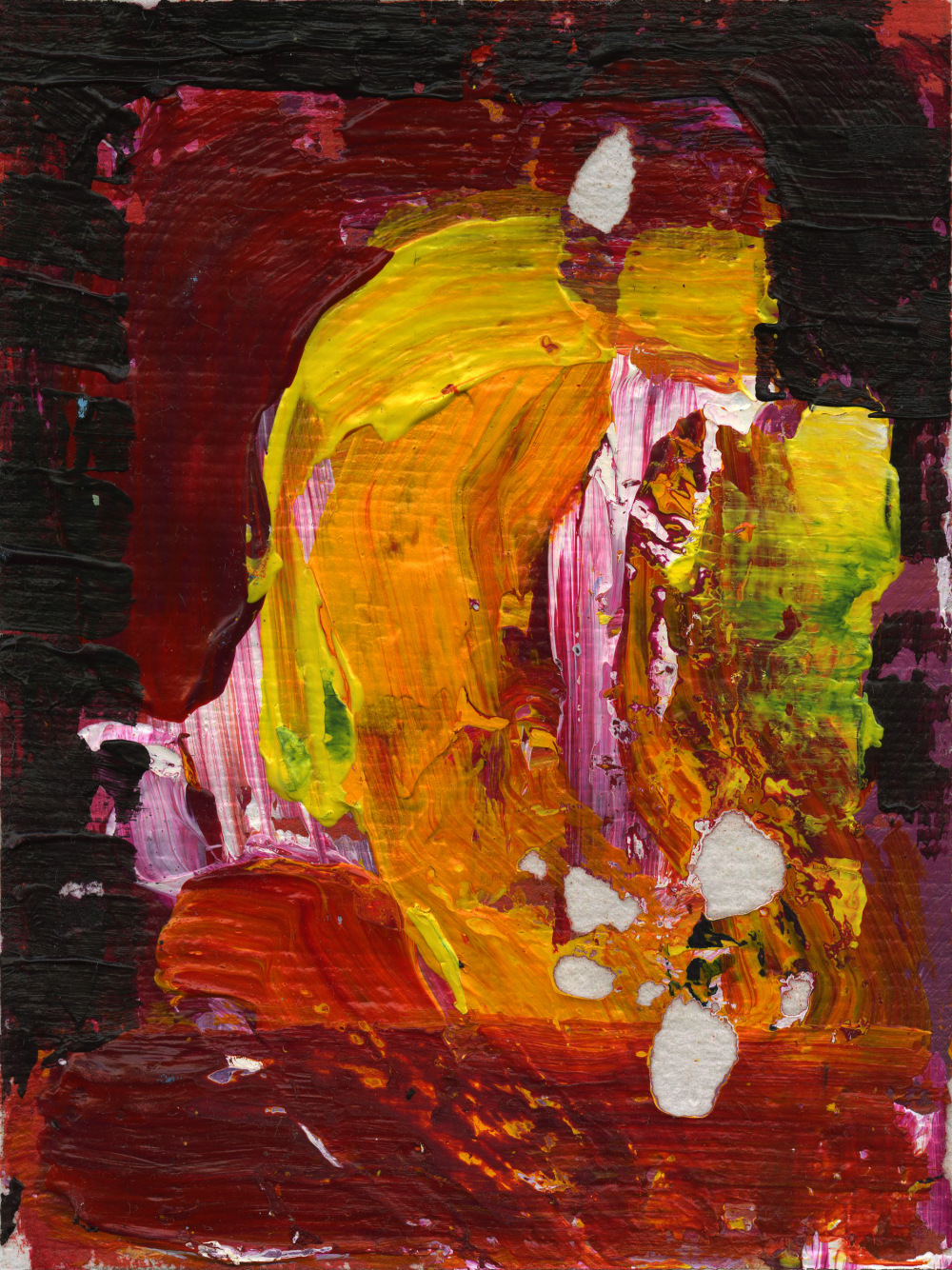Images courtesy of the artist.
A Familiar Tale Told Out of Order
February 20, 2017
In our contemporary world, technological reproduction is increasingly becoming the dominant mode by which viewers first – and, more often than not, exclusively ever – encounter works of art. Walter Benjamin wrote of this shift in his seminal 1936 essay, “The Work of Art in the Age of Its Technological Reproducibility,” in which he suggests this “change testifies to the special conflict in which painting has become enmeshed by the technological reproducibility of the image” (36). In what follows, I endeavor to explicate the ways in which Freeman Schlesinger’s series, Free Lunch (2016), responds to the particular transformations in technological reproducibility between then and now. I suggest that in attempting to maintain control over the conditions of its reception, Free Lunch confounds discrete notions of authenticity, originality, and reproduction.
This past summer I reconnected with Schlesinger, a friend from high school, in the air-conditioned reprieve of a café off the Morgan Avenue L train stop in Bushwick, New York. An artist enrolled in his final year at the prestigious Pennsylvania Academy of the Fine Arts and University of Pennsylvania dual-degree program, he had recently spent time in Buenos Aires where he produced Free Lunch, a series of fifteen acrylic paintings on cotton rag paper. He surprised me when he pulled a stack of the works out of his bag, and let me flip through them.
As I held one of the works in my hand, I felt awash in the undeniable preciousness of their presence, in the affective experience of the “here and now,” or what Benjamin coins the “aura” of the work of art. They were extremely lightweight and delicate which was reflected by some flecks of paint that, like scabs, had already chipped off – tracing the works’ travels and marking “the history to which the work [had] been subject” (21). These physical changes to the work reaffirm the status of the works as authentic, as unique works that traveled through space and time. However, this sensation of the works unique existence and originality was also because, despite being small enough to fit into the palm of my hand, each work possessed a great deal of gesture and movement. These gestural strokes and dynamic color relationships traffic in the – by now exhausted and thoroughly critiqued – genre of Abstract Expressionist painting, which is infamous in its claim to be synonymous with authenticity and the pure, unmediated expression of the artist’s hand.
It’s important to note here that as I reflect on the series’ formal qualities I am modulating between two forms of viewing: the physical and the digital, and thereby muddling the distinction that Benjamin belabors between exhibition and cult value. However, it is precisely this “tension between [the] two polarities” of physical, in-person experience and that of the virtual that this series brings to the fore (25). The scale of the works, which are in perfect life-size proportion to how they are viewed the screen of an iPhone 6/7 (2.375 x 3.125 inches), highlights and throws into question any clear delineation between these modes of reception. What are the conditions of reception under which this series intended to be viewed?
The scalar limitation on the conditions of the works’ production suggests an awareness that the artist’s intentions are irrelevant – whether Schlesinger likes it or not, in the age of technological reproducibility, his works will inevitably be encountered within the space of the virtual. Whether this is the viewer’s first encounter with them or a subsequent one, the ability to reproduce images allows for the “copy of the original [to be] in situations which the original itself cannot attain” (21). While Benjamin hails this transitory quality as the work of art’s emancipation from the bonds of ritual, for the controlling artist this also evokes a reasonable anxiety. If the copy of an original can be placed in situations unattainable by the original, then is the work any longer the same work? Is it the artist’s anymore? In fact, is it even a copy?
In delimiting the scale of these works, Schlesinger attempts to maintain consistencies, to narrow the gap between and across its physical and virtual modes of reception – the former being what we might consider the original, and the latter the reproduction. However, this consideration demonstrates an anticipation of its inevitable, eventual technological reproduction. Yet, not just any reproduction of Free Lunch will do – if one were to just take a picture of it, they might capture imagery beyond the borders of the work. Instead, Schlesinger produces a virtual, ‘copy’ image scaled precisely to match the screen of an iPhone that becomes its only digitally accessible form. The intentional limitations on the size of the works anticipates its virtual life, and even suggest the work is not complete until it has been reproduced and encountered on the screen of an iPhone 6/7. Thus, Free Lunch necessarily entails this preliminary act of technological reproduction in order to be achieve its intended form, in order to become an original.
For Benjamin, reproducibility brings about the liberation of works of art from cult value, yet Free Lunch challenges this notion by creating a formal relationship between the physical ‘copy’ and the digital ‘original’ that compels a desire to view the two simultaneously. Even though we might locate the ‘original,’ resting within the digital realm of the iPhone screen, to be easily disseminated and accessible, the desire to compare and verify the two generates a cult value in the copy. As a result, Free Lunch displaces the authority of the original and complicates discrete allocations of originality, reproduction, and uniqueness.


